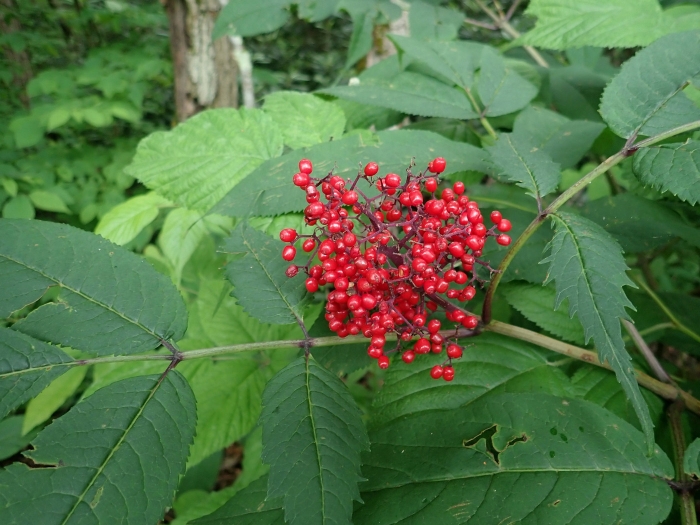Red Elderberry
(Sambucus pubens)
Red Elderberry (Sambucus pubens)
/
/

Evan M. Raskin
CC BY 4.0















































Estimated Native Range
Summary
Red Elderberry is valued for its wildlife-friendly attributes and its ability to thrive in a range of soil conditions, from wet to well-drained. It is often used in naturalized plantings, as a component of wildlife gardens, and for erosion control on slopes. Gardeners should provide it with full sun to partial shade and ensure consistent moisture for optimal growth. While generally low-maintenance, it can be susceptible to powdery mildew and other fungal diseases. Pruning is recommended to maintain a desirable shape and to remove any dead or diseased wood.CC BY-SA 4.0
Plant Description
- Plant Type: Shrub
- Height: 6-12 feet
- Width: 4-10 feet
- Growth Rate: Moderate
- Flower Color: Cream, White
- Flowering Season: Spring
- Leaf Retention: Deciduous
Growth Requirements
- Sun: Full Sun, Part Shade
- Water: Medium
- Drainage: Fast, Medium, Slow
Common Uses
Bee Garden, Bird Garden, Border Plant, Butterfly Garden, Deer Resistant, Edible*Disclaimer: Easyscape's listed plant edibility is for informational use. Always verify the safety and proper identification of any plant before consumption., Fragrant, Hummingbird Garden, Low Maintenance, Rabbit Resistant, Salt Tolerant, Showy Flowers, Water Garden
Natural Habitat
Moist, fertile woodlands, streambanks, and forest edges
Other Names
Common Names: American Red Elderberry , Red Elderberry , Red-Berried Elder , Roter Holunder
Scientific Names: Sambucus pubens , Sambucus racemosa subsp. racemosa , Sambucus microbotrys , Sambucus callicarpa , Sambucus racemosa subsp. pubens , Sambucus racemosa var. pubens , Sambucus racemosa var. arborescens , Sambucus racemosa var. microbotrys , Sambucus leiosperma , Sambucus pubens var. arborescens
GBIF Accepted Name: Sambucus racemosa subsp. racemosa